NEW YORK — With a quick jab to a nurse’s left deltoid, America entered a new phase in its fight against the coronavirus on Monday.
The injection to Sandra Lindsay’s arm at Long Island Jewish Medical Center made her the first American to receive the coronavirus vaccine outside a clinical trial. The small shot represented a giant leap in efforts to beat back the virus, a moonshot worth of hope amid a pandemic that has infected more than 16 million and killed more than 300,000 nationwide.
“Sandra, you didn’t flinch,” New York Gov. Andrew Cuomo, a Democrat, told the critical care nurse after the injection was administered, as he watched via live stream from his office.
“It didn’t feel any different than taking any other vaccine,” said Lindsay, seated in a puffy blue armchair.
But this vaccine is monumentally different. Developed in record time, it is expected, eventually, to help end a pandemic that has crippled much of life in the United States – and globally – for the better part of a year.
“I believe this is the weapon that will end the war,” Cuomo said.

Nurse Annabelle Jimenez, left, congratulates nurse Sandra Lindsay after she was inoculated with the Pfizer-BioNTech COVID-19 vaccine, Monday, Dec. 14, at the Jewish Medical Center, in the Queens borough of New York. Associated Press/Mark Lennihan, Pool
Vaccinations rolled out across the country Monday, with doctors and nurses at hospitals nationwide injecting one another as part of a federal plan to prioritize front-line health care workers. Some said they had dedicated the experience to the patients they had lost, or to family members they had seldom seen as they battled around-the-clock to save others.
“I just lost my 27th patient today,” said Louisville physician Valerie Briones-Pryor. “So the vaccine I took today was for her family and for the other 26 I lost.”
The immunization campaign will rapidly expand in the days ahead, with some states beginning to include nursing homes. Federal officials leading the effort to manufacture and distribute the vaccines said Monday they expect 20 million people to get the first of two required doses by the end of the year.
The first batches shipped overnight Sunday, following emergency use approval over the weekend, with hospital administrators eagerly checking online tracking tools for arrival updates. In several states, governors were on hand at hospital loading docks as crates of dry-ice-packed vaccine were delivered to doctors and nurses who cheered their arrival.
The first inoculation was heavy on symbolism: Long Island Jewish Medical Center, in Queens, was on the front lines of the covid-19 fight this spring. It is part of the Northwell Health System, which has treated more than 100,000 covid patients. Several among the first to receive the vaccine, Lindsay included, are Black, a reflection of the virus’s outsized toll in communities of color.
But even as Cuomo, Lindsay and others watching live celebrated, they also offered reminders that it will take months for enough people to be vaccinated to influence the broader course of the virus among the public.
“There’s light at the end of the tunnel,” Lindsay said. “But we still need to wear masks and social distance.”
And even with the injection, Lindsay was not protected. The vaccine administered Monday – which was developed by Pfizer with the German company BioNTech – takes two doses to achieve the 95% effectiveness that studies have shown.
The initial distribution of 2.9 million doses will come as much-needed relief for medical workers and residents and staffers at long-term care facilities. But it alone will not arrest the spread of a virus that has never been more prevalent or destructive in the United States than it is today.
The first inoculations Monday came at a time when the United States is averaging more than 200,000 new cases and nearly 2,500 deaths each day. Both are record highs.
Nonetheless, large segments of the population continue to ignore warnings to wear masks and avoid gatherings. A significant segment of the country also says it has no intention of getting immunized: Recent surveys have shown between 42 percent and 61 percent of Americans are willing to get vaccinated.
Monday’s vaccinations – carried out on television and via live stream on social media – were aimed squarely at upping that percentage before the vaccine is made available to the general population, which is likely to happen in the late winter or spring.
“We just have to do it,” urged Cuomo. “The vaccine doesn’t work if it’s in the vial.”
President Donald Trump – who has repeatedly mocked mask-wearing and other public health measures while touting the virtues of a vaccine – signaled his approval. “First Vaccine Administered,” he tweeted within minutes of Lindsay’s injection. “Congratulations USA! Congratulations WORLD!”
The United States was not the first Western country to administer the Pfizer-BioNTech vaccine. That distinction belonged to Britain, which started inoculations last Tuesday with a shot in the arm of 90-year-old Margaret Keenan.
Approvals in the United States took slightly longer. But many American hospitals on Monday were wasting no time getting the process underway, administering doses nearly as soon as they had been delivered. More than half of states had received their initial vaccine shipments by around midday Monday.
At UPMC Children’s Hospital of Pittsburgh, UPS driver Dallas White wheeled a single box of vaccine through the hospital’s loading dock and up to the pharmacy first thing Monday.
Once there, Lynn Peffer, an inventory specialist, and Carol Vetterly, the clinical pharmacy director, used tongs, a box cutter and even a cake knife to work their way through the thickly packaged parcel. Beneath a layer of dry ice, they found a container the size of a kitchen tile containing 975 doses of the vaccine.
The doses were administered to front-line workers who interact with covid-19 patients, including emergency-room doctors, intensive care nurses, anyone assigned to patient transport and even custodial workers.
Sylvia Owusu Ansah, an emergency medicine physician, was among them. She said she wanted to take the vaccine to demonstrate to fellow African Americans that it was safe.
“There is a skepticism there that is not unwarranted,” she said, referencing the seed of distrust between Black Americans and experimental medicine planted with the Tuskegee syphilis experiment, in which Black men in the study were left untreated. “Basically, if I can do it, they can do it.”

A FedEx driver gives a thumbs up after delivering a box containing the Pfizer-BioNTech COVID-19 vaccine to pharmacists Richard Emery, right, and Karen Nolan as it arrives at Rhode Island Hospital in Providence, R.I, on Monday. Associated Press/David Goldman
In next-door Ohio, Gov. Mike DeWine, a Republican, was on hand when a UPS delivery truck carrying 975 doses of the vaccine arrived outside the Biomedical Research Tower at Ohio State University’s Wexner Medical Center in Columbus at 9:15 a.m.
Just over an hour later, the inoculations were underway.
“Vaccinators, are you ready? Recipients. are you ready? Three, two, one!” Elizabeth Seely, Wexner’s chief administrative officer, announced to a room of 30 front-line health-care workers and vaccinators.
The first six shots were met with cheers and applause.
Robert Weber, 63, chief pharmacy officer and one of those administering the vaccine, said it was a “once-in-a-lifetime opportunity.”
In an appearance at George Washington University Hospital in Washington, Health and Human Services Secretary Alex Azar called the vaccine “a medical miracle.” He said that an additional 30 million Americans are predicted to receive a first dose of the vaccine in January.
Efforts are expected to be bolstered by a drug developed by Moderna that is in the process of being reviewed by federal regulators and, officials said, could be available for use starting next week.
For hospitals preparing to start the vaccination process, there was an expectation of desperately needed relief.

Pharmacists wheel a box containing the Pfizer-BioNTech COVID-19 vaccine to a freezer as it arrives at Rhode Island Hospital in Providence, R.I, on Monday. Associated Press/David Goldman
“The vaccine will liberate our workforce, the people who are really working taking care of patients, from worrying about whether they face a death sentence from accidentally getting infected,” said UC Davis Health CEO David Lubarsky.
Nearly 10 months after The UC Davis Medical Center staff treated the first known U.S. case of community transmission, the Sacramento, Calif., hospital was prepared to receive 4,875 doses of the Pfizer vaccine on Tuesday.
That depends, of course, on a smooth delivery of the shipments. But so far at least, there have been no reports of serious delays.
“It’s humbling being a part of this vaccine process because it’s going to save a lot of lives,” said Byron Bishop, the UPS driver who pulled his truck up to the University of Louisville Hospital at 9:40 a.m. He was greeted by applause plus an elbow bump from the governor, Andy Beshear.
Beshear, a Democrat, said he was feeling “the best I’ve felt since March 6,” the day when Kentucky counted its first coronavirus case. “Today is the day we start winning the war against covid.”
Later, he appeared to be fighting back tears as he talked about a close friend who lost his mother to the virus and then had to go into quarantine for two weeks, preventing him from grieving with his family.
On a day devoted to allaying concerns about the vaccine, medical professionals were among those who acknowledged some early concern, given the extraordinary speed with which it was developed.
“My initial thought was, it usually takes years and years to get a vaccine approved for anything, so I was a little skeptical at first,” said David Meysenburg, who directs Nursing, Emergency and Trauma Services at UF Health Jacksonville. “But then the more information I got on it, and the more research I did from credible sources, I felt very comfortable.”
He said he still felt that way after receiving his first dose Monday. He also felt hope.
“This is the first time where you can sense that there’s an end in sight,” he said.
At Ochsner Medical Center in Jefferson, La., the administration of the first doses was streamed live on Facebook. The event was a slick production full of medical details, such as how five doses are carried in each vial.
Chief Medical Officer Robert Hart hosted interviews with a diverse group of staffers as they got their shots, sending them off with “CV-19 vaccinated” stickers.
“She is in the middle of it day in and day out,” he said of one nurse, Mia Yepez, who works in a covid-19 unit.
Yepez said that it is especially important for her to be there because she is African American. She encouraged her colleagues and others in her community to get vaccinated.
“We want to be able to stop the many admissions,” she said.
Louisiana is one of the many states where the Black community was hit hard by initial waves of the outbreak and where news of the vaccine has been greeted with some skepticism.
When the presidents of two historically Black colleges in Louisiana – Walter Kimbrough of Dillard University and C. Reynold Verret of Xavier University – announced in early September that they had volunteered to test one of the vaccines, many reacted on social media with alarm.
On Monday, some of that hesitation showed up on Ochsner Medical Center’s Facebook page, with people commenting that they may eventually get the vaccine but have decided not to at the moment.
Anesthesiologist Raymond Pla was the only Black employee of George Washington University Hospital to be vaccinated Monday. His message to Black Americans was that the shot did not hurt and is supported by robust research. “If you want the funerals from the covid-19 infection to slow down and stop, you got to get the vaccine,” he said.
At the site of the first injection – Long Island Jewish Medical Center, in Queens – Yves Duroseau, emergency-medicine chair at Manhattan’s Lenox Hill Hospital, was the second person to receive his shot. Michelle Chester, director of employee health services for Northwell Health, administered vaccines to both Duroseau and to Lindsay.
“This is the beginning of the end of covid,” Chester said. “Together, as a community, as a nation, we can end this.”
Chester donned purple gloves and gave Duroseau a swift jab with a slender syringe.
“Ready?” she said.
“Please,” Duroseau said.
“Let’s do this!”
Duroseau said he had seen “devastation” from covid-19 in his family, with the death of an uncle. Another of his family members is in the hospital with the disease.
“Everyone was waiting for this day,” he said. “It could not have come soon enough.”
Send questions/comments to the editors.

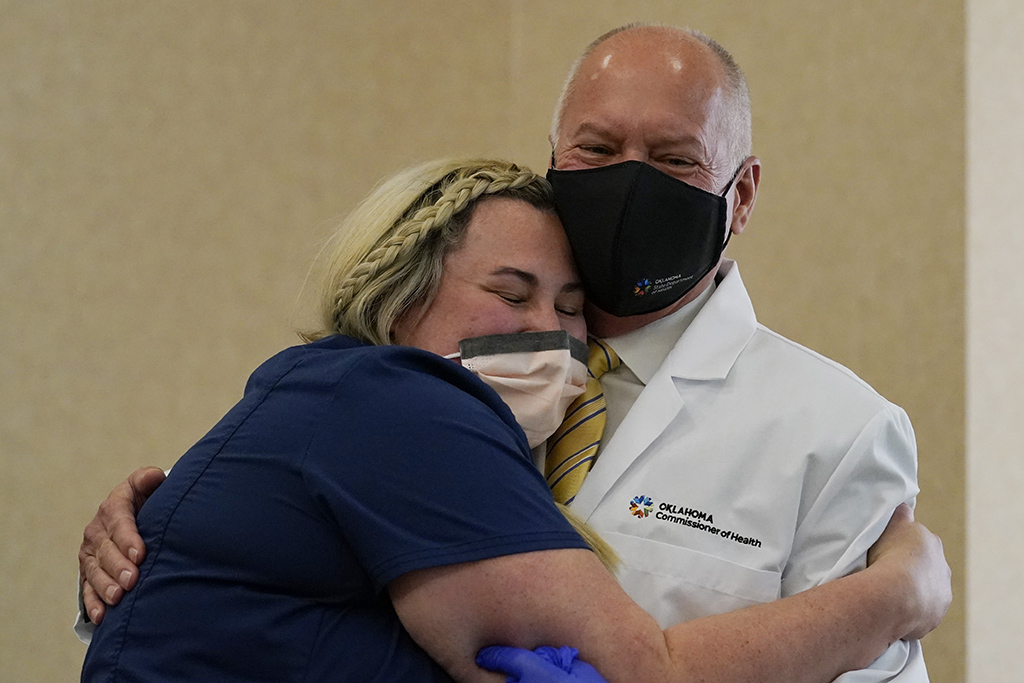

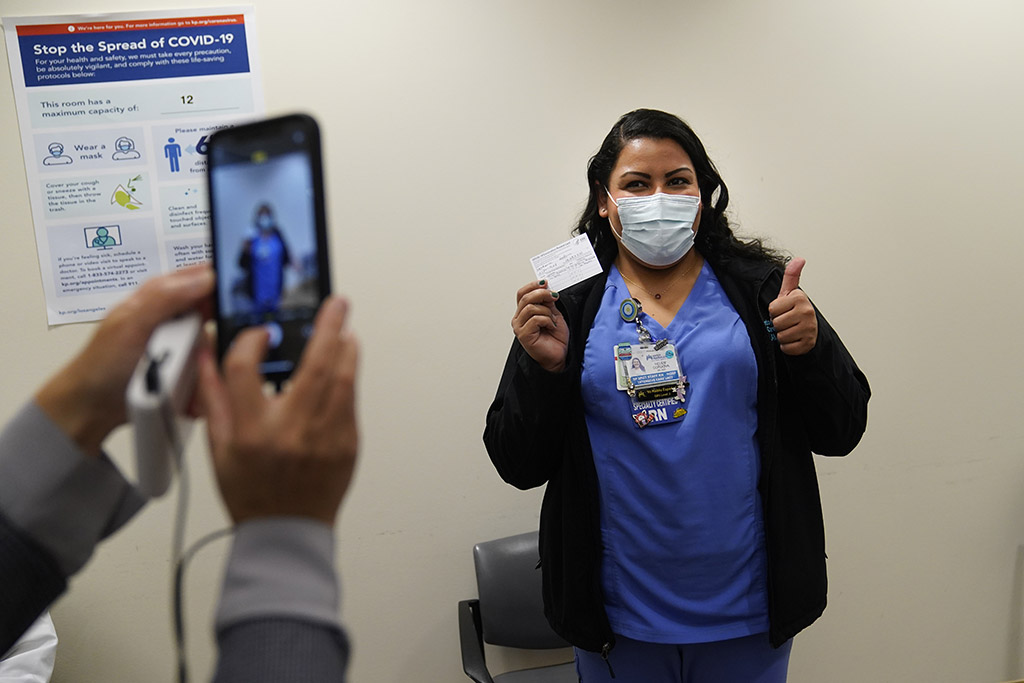
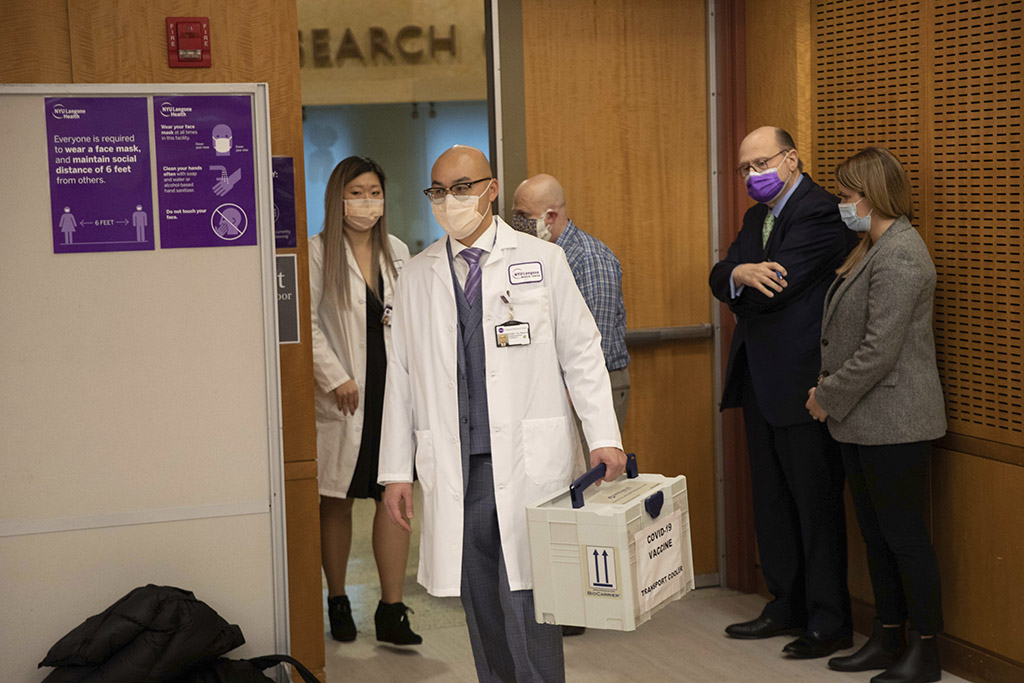

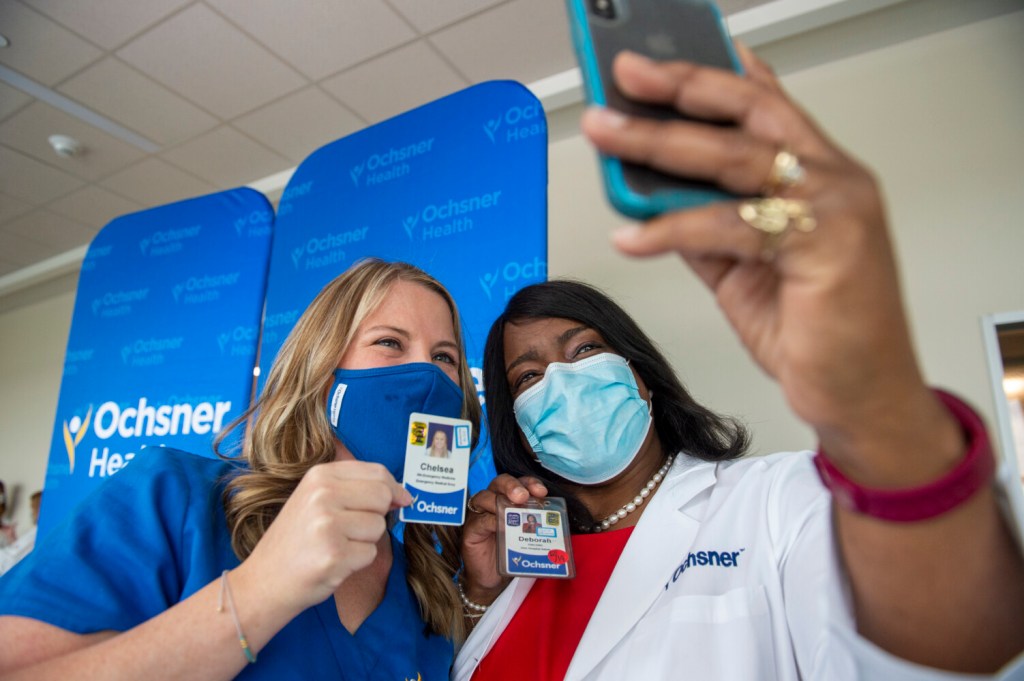
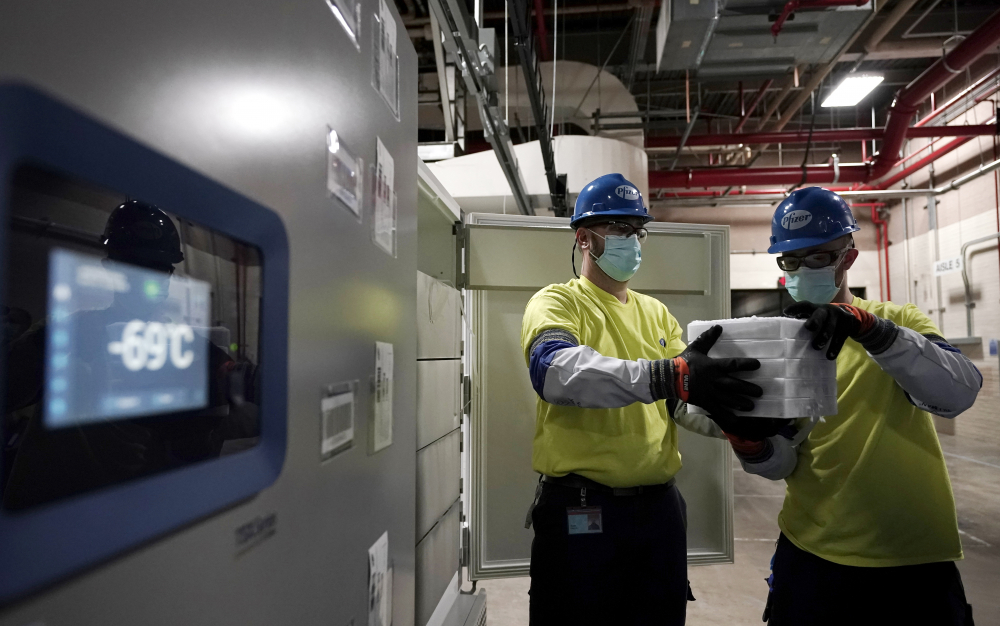
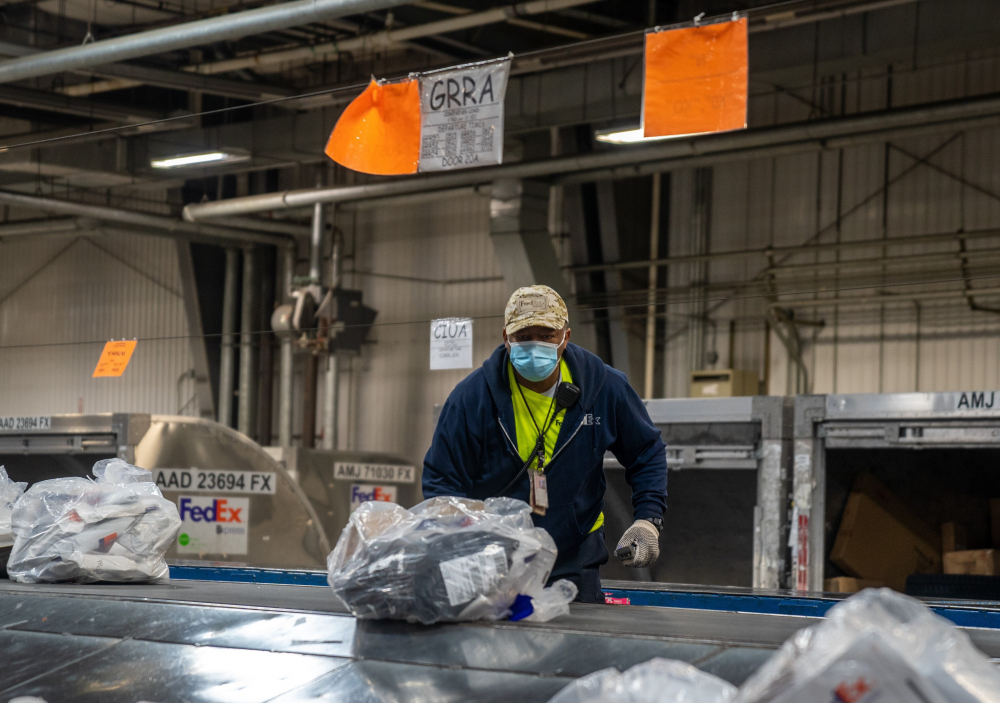
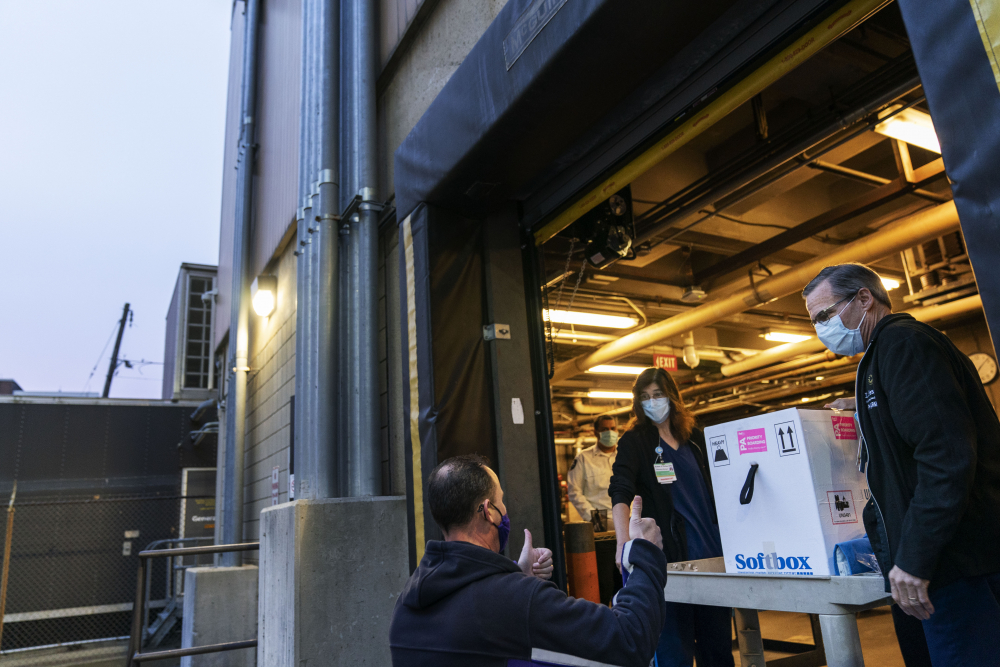
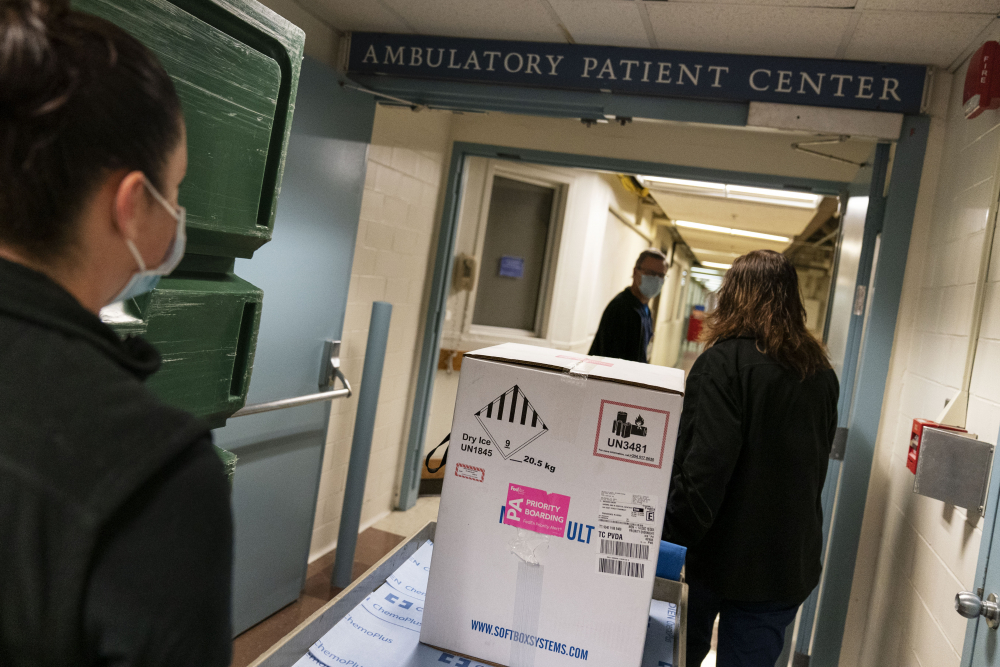
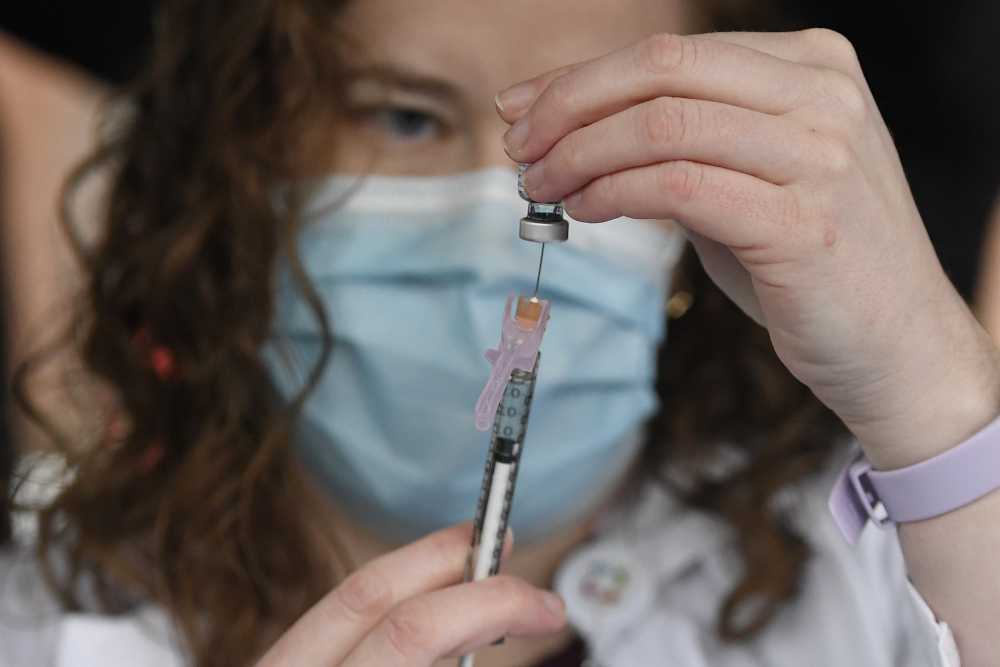
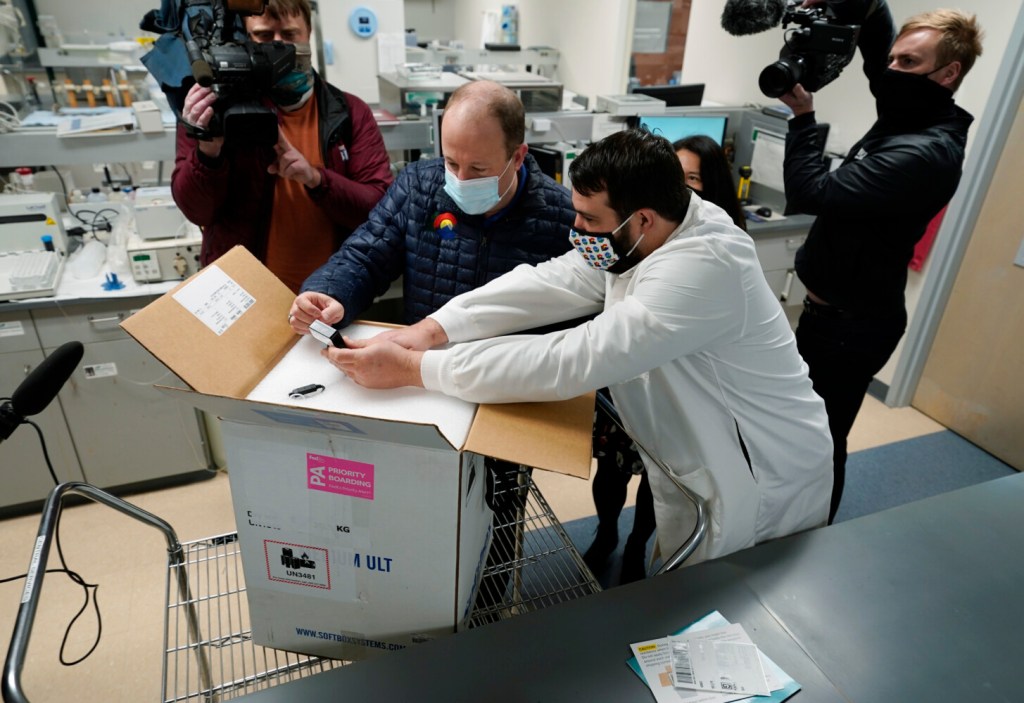
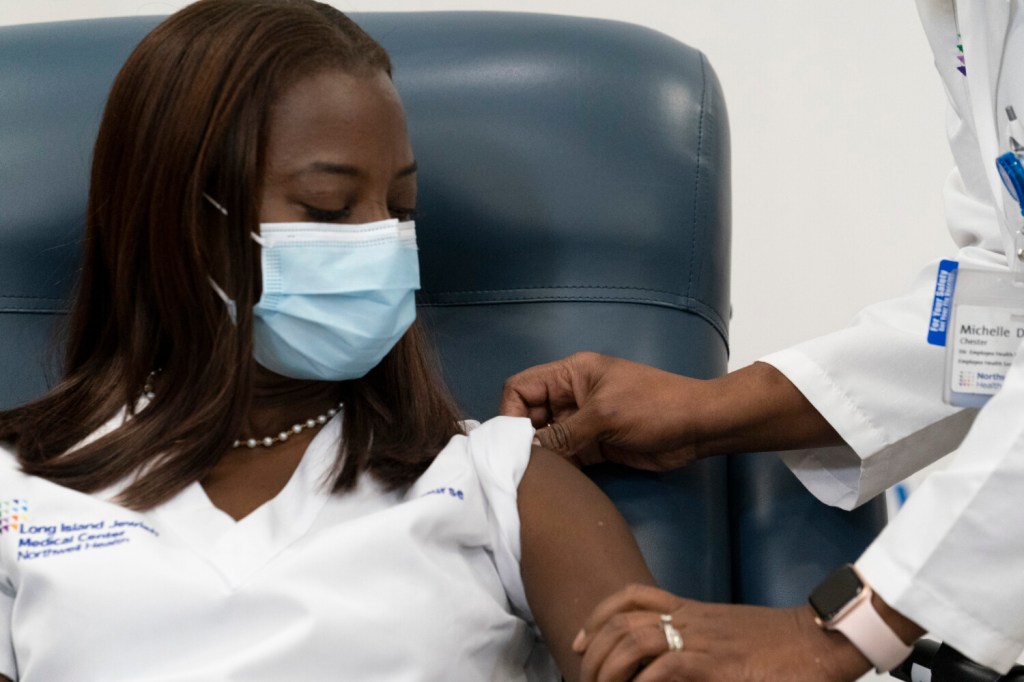
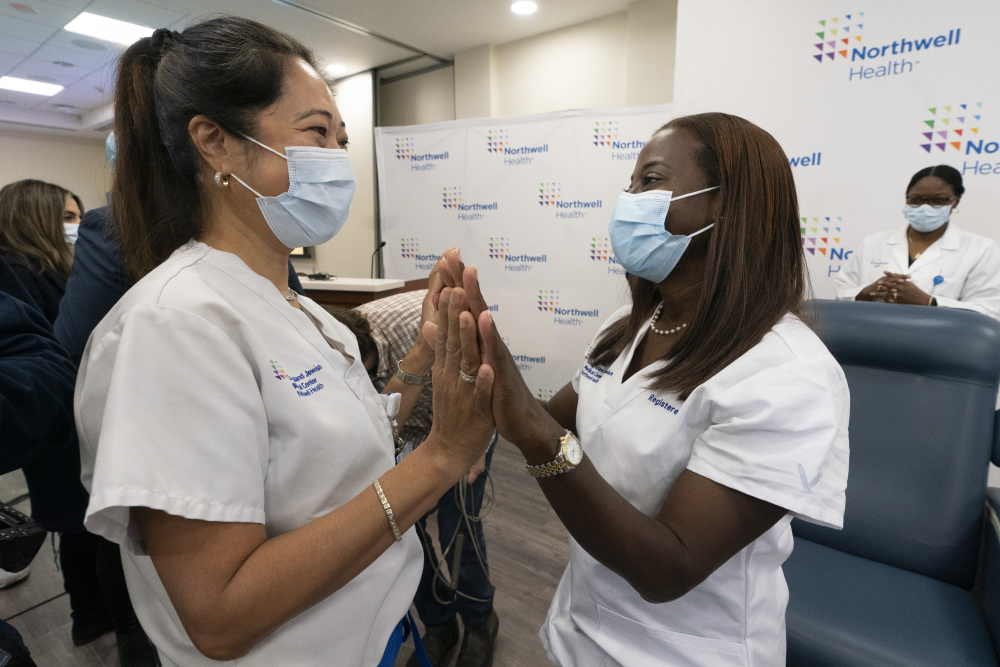
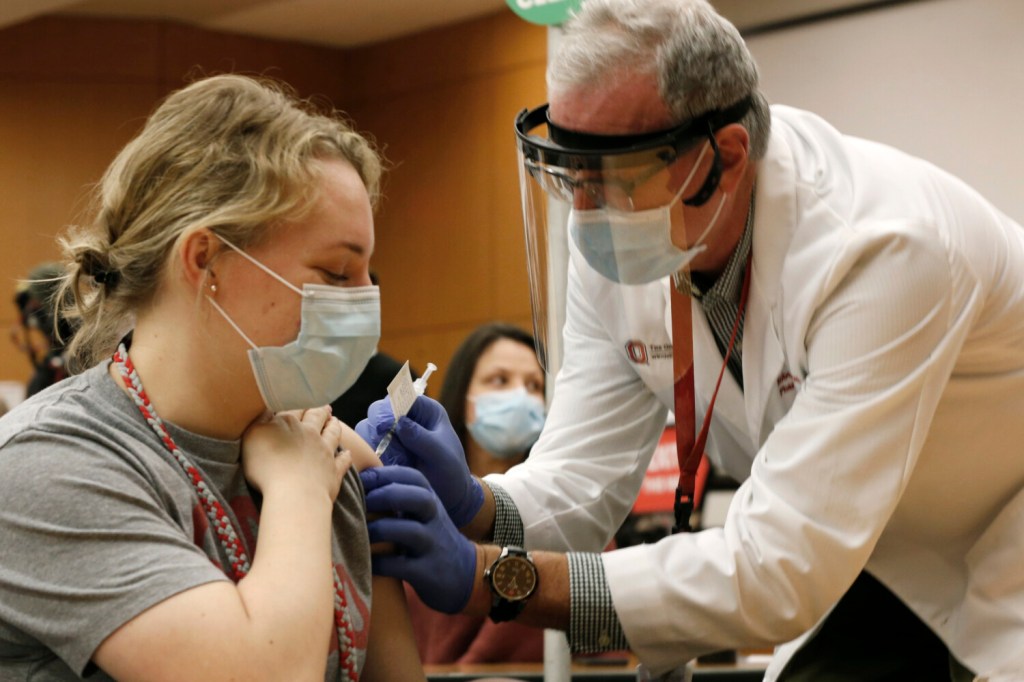
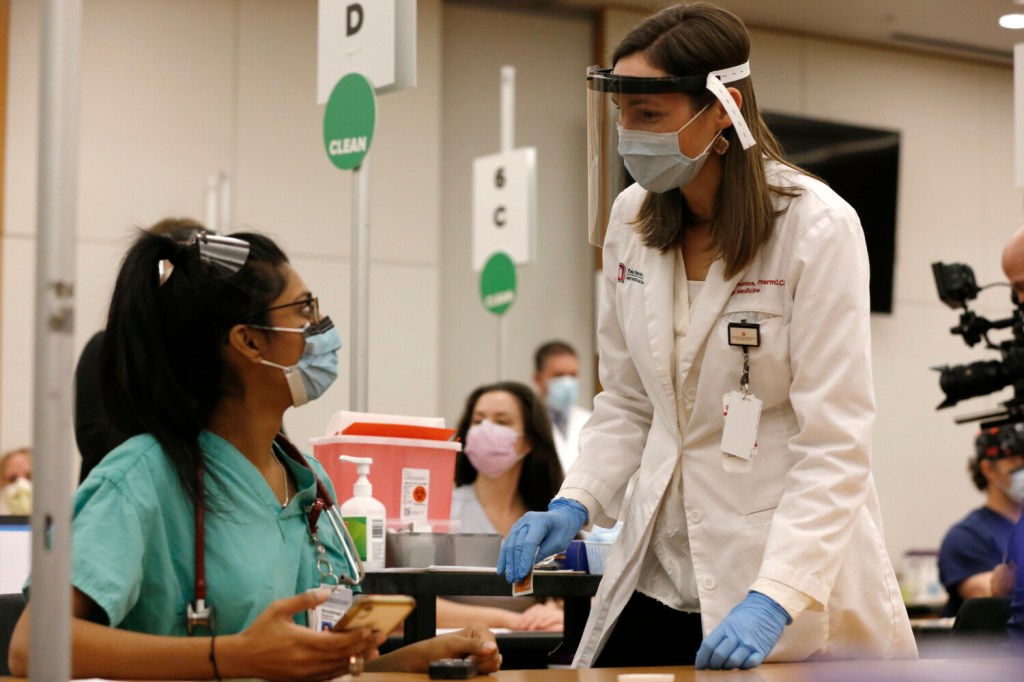
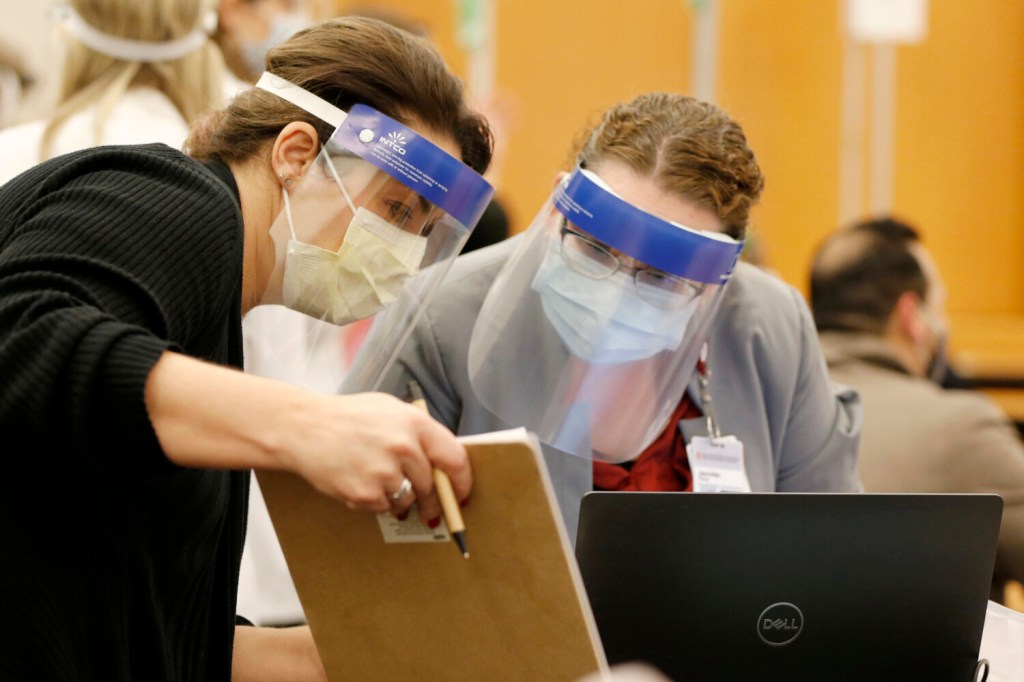
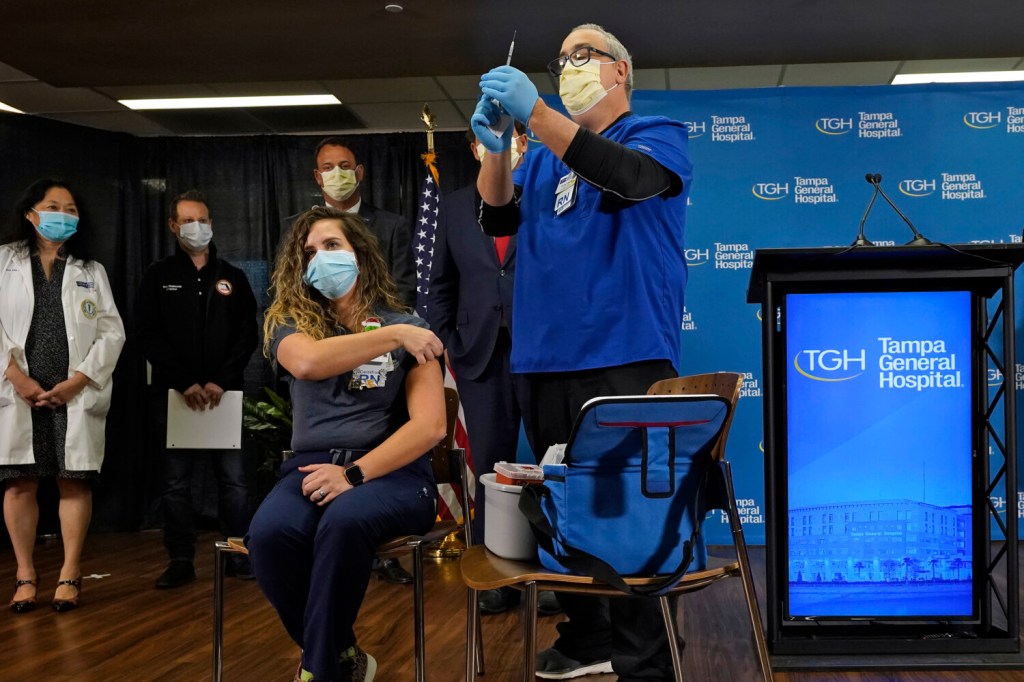

Comments are no longer available on this story